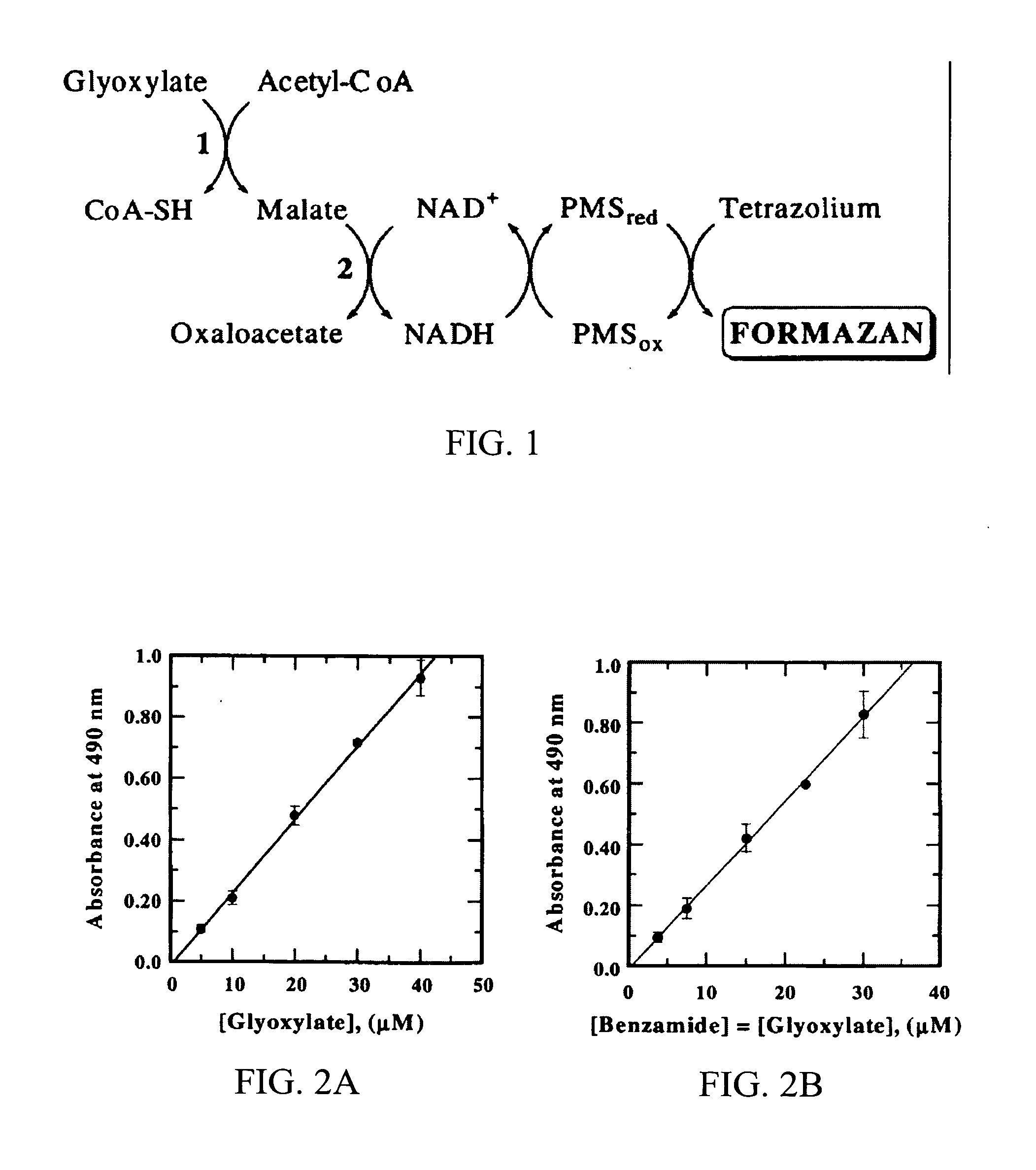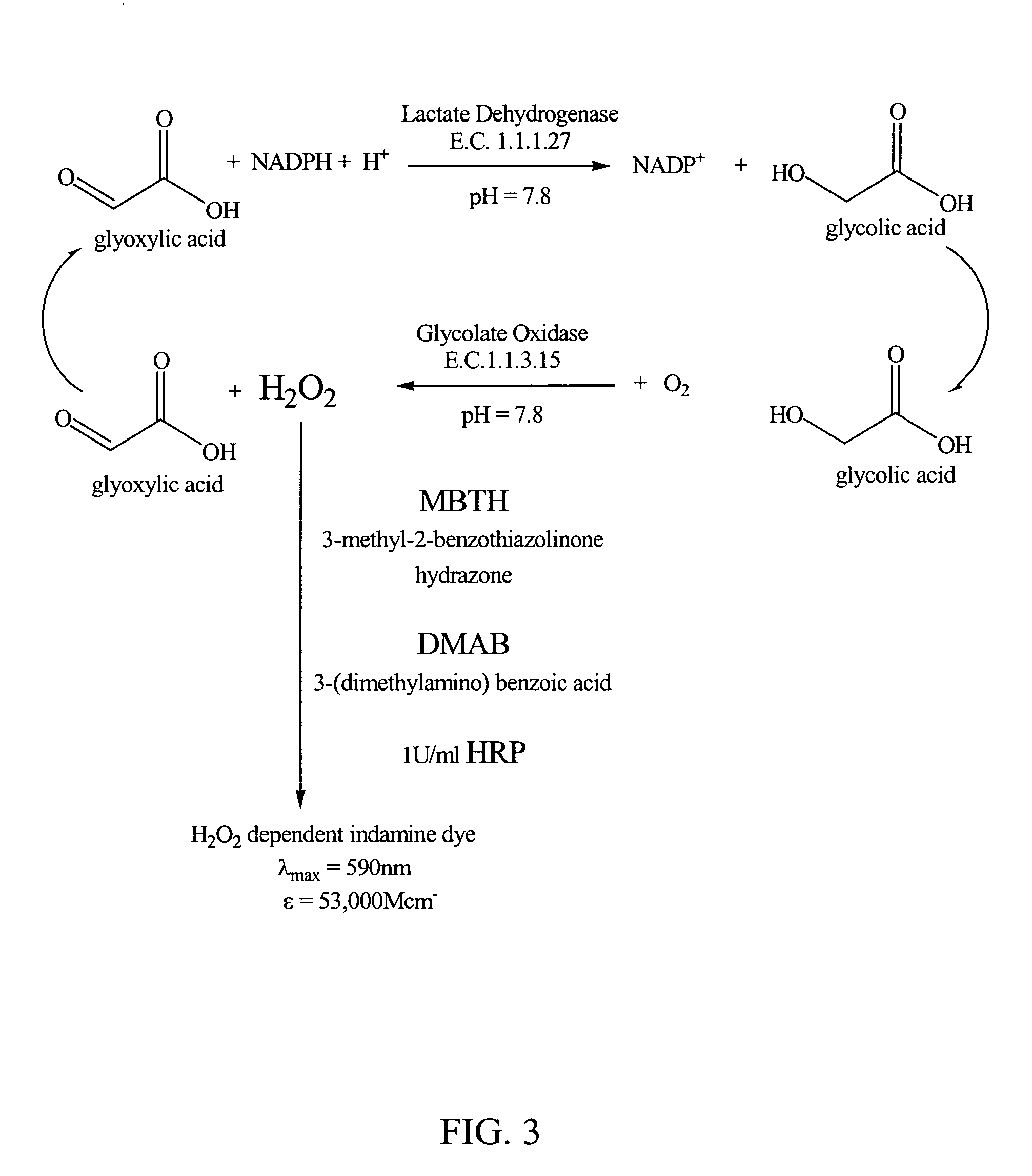Glyoxylate assays and their use of inden tifying natural amidated compounds
a technology of inden titration and amidated compounds, which is applied in the field of glyoxylate assays and their use of inden titration natural amidated compounds, can solve the problems of insensitive and/or non-specific assays, and the specificity of these techniques remains less than ideal, and the difficulty in discovering novel amidated hormones
- Summary
- Abstract
- Description
- Claims
- Application Information
AI Technical Summary
Benefits of technology
Problems solved by technology
Method used
Image
Examples
example 1
[0056] Based on sensitivity alone the luminescent enzyme assay utilizing glycolate oxidase was chosen for application of the glyoxylate assay as a route to the identification of an α-amidated peptide. Any of the assays of the present invention could be used; however, the most sensitive of these techniques is more desirable. A cell line of mouse pituitary cells known to express mouse joining peptide (mJP) (Ala-Glu-Glu-Glu-Ala-Val-Trp-Gly-Asp-Gly-Ser-Pro-Glu-Pro-Ser-Pro-Arg-Glu-Gly) were grown in cell culture to approximately 80% confluency. Cells were then grown in the presence of a PAM inhibitor in order to accumulate the glycine-extended peptides. Spent media was fractionated by Reverse-Phase High Performance Liquid Chromatography (RP-HPLC), and each fraction was then treated with PAM. Fractions positive for glyoxylate were analyzed against a sample containing an internal standard of mJP, to conclude the glyoxylate assay was indeed correct at identifying the presence of a glycine-e...
example 2
Detection of Rat CGRP-Gly in CA-77 Cell Conditioned Medium Using the Enzyme-Linked Luminescent Assay
[0057] Rat CA-77 cells were grown in T75 flasks to near confluence (60-90%) in DMEM:F10 (supplemented with insulin, transferring and selenium) and 10% fetal bovine serum (FBS). Cells were washed twice with PBS to remove residual FBS. Cells were grown further for either 24 or 48 hours in DMEM:F10 (supplemented with transferring and selenium) in the presence of a secretagogue, 0.1 μM dexamethasone, and a PAM inhibitor, 100 μM diethyldithiocarbamic acid. Insulin, which is present at high concentration, was omitted from the second growth medium to avoid potential interference during purification. Conditioned medium was harvested and cellular debris was removed by centrifugation.
[0058] Approximately 270 mL of conditioned medium was loaded onto an Amberchrom CG300M reversed-phase column (1.1 cm×14.5 cm) equilibrated with 0.1% TFA, 2% MeCN. The column was operated at 180 cm / hr and the abso...
PUM
 Login to View More
Login to View More Abstract
Description
Claims
Application Information
 Login to View More
Login to View More - R&D
- Intellectual Property
- Life Sciences
- Materials
- Tech Scout
- Unparalleled Data Quality
- Higher Quality Content
- 60% Fewer Hallucinations
Browse by: Latest US Patents, China's latest patents, Technical Efficacy Thesaurus, Application Domain, Technology Topic, Popular Technical Reports.
© 2025 PatSnap. All rights reserved.Legal|Privacy policy|Modern Slavery Act Transparency Statement|Sitemap|About US| Contact US: help@patsnap.com



